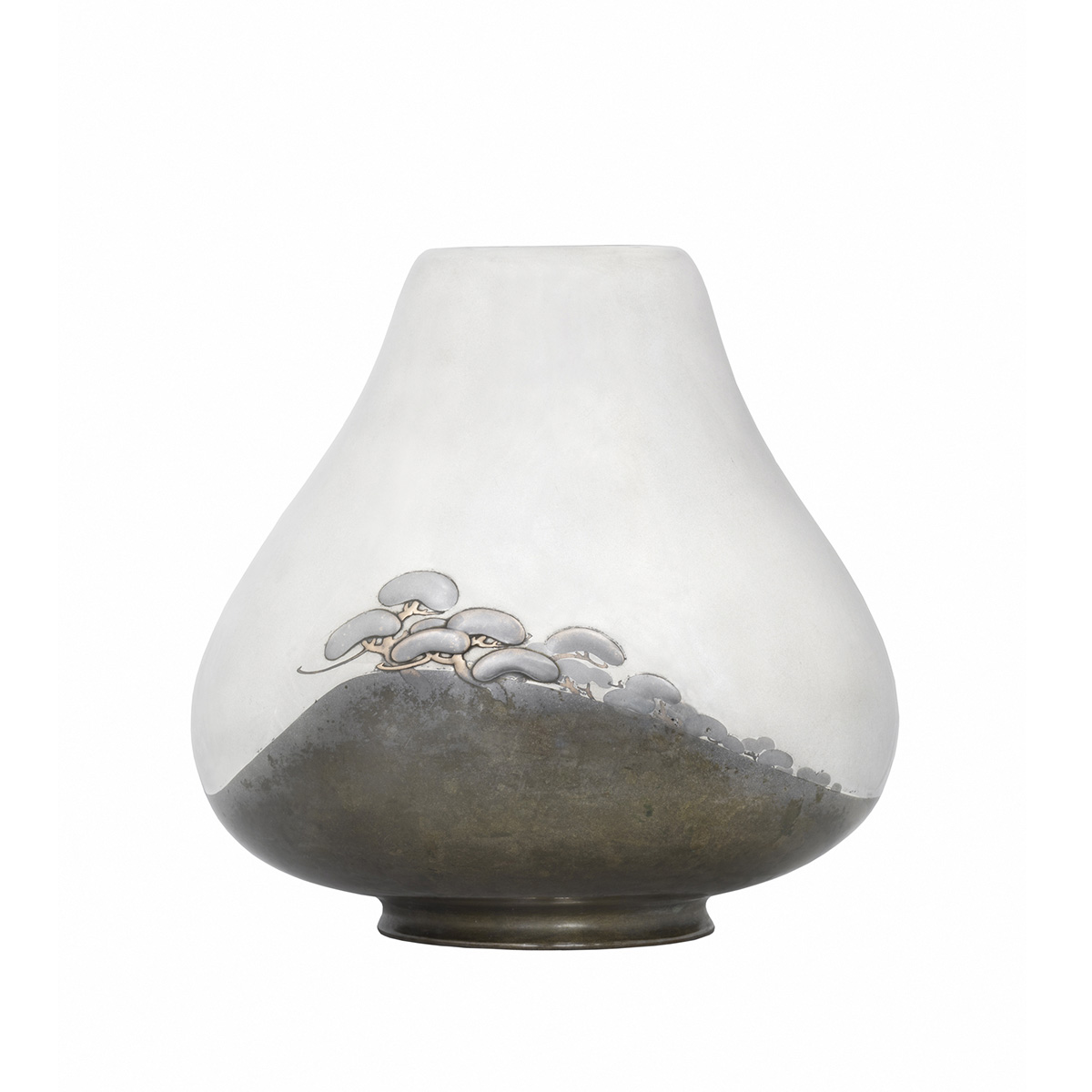Chagama
Metal
Description
Tetsu chagama with design of deers (shika)
Cast iron kettle with iron lid
Used in tea ceremony
Made by Nagoshi Jyōmi (?-?)
Edo period, 18th century
Nara Prefecture
H.: 18.5 cm – torso Ø.: 23 cm – lid Ø.: 10.1 cm
Nagoshi Jyōmi is an artist name of a kamashi (tea ceremony iron kettle artisan). His family was active for eleven generations in the Edo period. The first head worked for the daimyo Oda Nobunaga and he was recognized as the best kamashi artist of the time (tenka-ichi). He named himself “Jyōmi” and every head of the family claimed this name from then on. Chagama is a metal kettle to heat the water used to make tea in the tea ceremony. In the tea room, the kama is either heated over a portable brazier or in a sunken hearth built into the floor of the tea room. A mountain range is depicted on the neck, and Japanese maple tree and deer can be seen on the kettle’s body.
These motifs indicate the Kasuga Mountain in Nara Prefecture. The maple tree and the deer are a symbolic combination which expresses the love between parents and their children. It also indicates the autumn season, and the two are often depicted together in Japan. It originated in an old story of a boy who had killed a deer by accident in Nara. In the old days, the deer was believed to be a messenger of God, and killing it was prohibited. The boy was executed for his crime. It is said that his mother planted a maple tree to commemorate her son. Afterward, this tale became a famous Jōruri story, the form of puppet theatre that later came to be known as bunraku, by the famous Japanese dramatist Chikamatsu Monzaemon (1653-1725).


